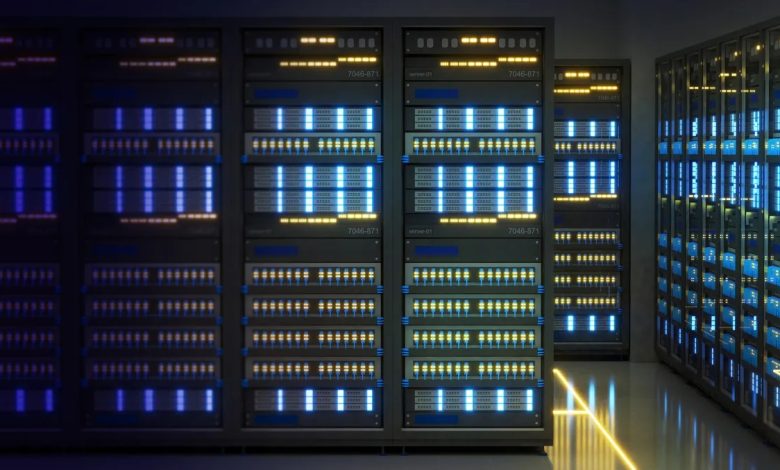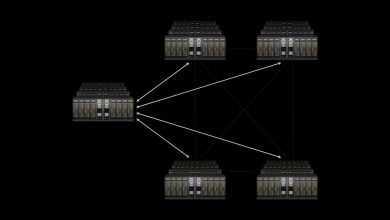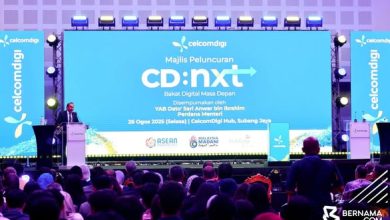Bridging the Talent Shortage in Modern Data Centres

By Adrian Koh, Head of Secure Power Division of Schneider Electric Malaysia
 In today’s increasingly digitised world, data centres play a vital role in housing and managing the massive amounts of information generated by individuals, businesses, and governments. These facilities serve as the backbone of modern technology, supporting everything from cloud computing to artificial intelligence.
In today’s increasingly digitised world, data centres play a vital role in housing and managing the massive amounts of information generated by individuals, businesses, and governments. These facilities serve as the backbone of modern technology, supporting everything from cloud computing to artificial intelligence.
Owing to its expansive land availability and power resources, seamless global connectivity, and supportive governmental regulations, Malaysia has emerged as a strategic and ideal destination for investment in data centres. According to Knight Frank’s Malaysian Data Centre White Paper report, Malaysia is also currently the top location for data centre investment in Southeast Asia with a 113MW of take-up in 2022. However, as the demand for data centres continues to grow exponentially, a pressing issue poses a significant challenge: the talent shortage in this crucial industry.
The rapid expansion of data centres has created a high demand for skilled professionals who can design, build, operate, and maintain these complex infrastructures. According to a prediction by Malaysia Digital Economy Corporation (MDEC) in December 2022, the demand for such talent is projected to experience a Compound Annual Growth Rate (CAGR) of 7.59% annually in the next three years.
The war for data centre talent
A report by Uptime Institute indicates that by 2025, at least 2.3 million full-time staff will be required to keep data centres globally operational, with demand coming mainly from internet giants and colocation providers in Asia Pacific, Middle East, and Africa.
To address the shortage of data centre talent, industry leaders must work together to improve recruitment, enhance training and increase awareness of opportunities. Traditional hiring and mentorship strategies must be replaced with new approaches that leverage the latest digital transformation and innovation trends. Here are three ways to bridge the data centre talent gap:
Embrace the gig economy to meet the tech talent crunch
With an estimated value of RM1.61 billion, the Malaysian gig economy is on the rise, and local platforms are projected to grow from RM371.4 million in 2021 to RM650 million by 2025, according to a speech by our Deputy Prime Minister. This trend of short-term contracts and freelance work characterises the gig economy, which is gaining popularity rapidly and becoming more mainstream worldwide. In Malaysia, approximately 3.9 million workers, accounting for roughly 25% of the workforce, fall into the category of gig workers, according to EMIR Research’s findings in 2020.
Data centre companies have the opportunity to leverage the growing pool of skilled gig workers to access a broad range of adaptable professionals and quickly advance projects without the need for time-consuming recruitment procedures. Additionally, gig workers can be brought on board on a short-term basis to address non-core tasks or to manage spikes in demand. This flexibility allows companies to remain agile and responsive to changing business needs while also helping to control costs.
Recognise the significance of non-traditional, transferrable talents
Data centres require a diverse range of skills beyond technical expertise. Individuals with backgrounds in fields like project management, logistics, customer service, and even arts can possess transferable skills that are highly applicable to data centre operations. By tapping into this talent pool, data centre players can access a broader range of adaptable professionals who can contribute to projects without the need for time-consuming recruitment procedures.
In many cases, non-traditional workers may possess unique abilities that reveal hidden potential, even if they are not immediately apparent. Data centre players can make changes to job descriptions’ requirements to create a more inclusive and diversified tech talent pool. By doing so, they foster a diverse and dynamic workforce, bringing fresh perspectives and innovative solutions to the industry. Offering training programmes and certifications that bridge the gap between non-traditional talents and data centre requirements can help these individuals acquire the necessary skills for success in the field.
Mentorship as a tool to engage and inspire
In the 2024 Budget presented by Prime Minister Datuk Seri Anwar Ibrahim, there are initiatives aimed at addressing the shortage of local talent and skill mismatches. In addition to the government’s efforts, company leaders can also inspire young individuals to consider a career in technology, crucially supporting the nurturing of the next generation of data centre talent through internships or STEM-related programmes.
Mentoring can help support both senior and junior employees’ ongoing professional growth. By pairing experienced professionals with those who are just starting their careers, mentorship programmes can help develop skills and provide guidance to help bridge the skills gap.
A dedicated professional development platform like the Schneider Electric University can also help close the skills gap in the data centre industry by helping industry players upgrade their skills and keep up with new technological, sustainability, and energy efficiency developments.
The talent shortage in data centres is a serious problem, but it is not insurmountable. By taking steps to create a more diverse and inclusive workforce the industry will thrive, develop, and fulfil the potential of digitisation.




